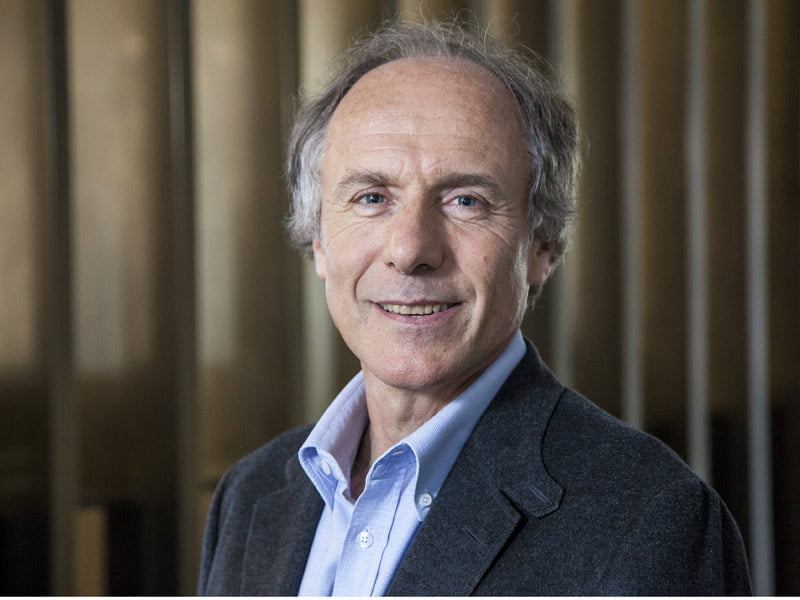Reports of Australia falling behind in the global innovation race have been greatly exaggerated, according to chief scientist Alan Finkel.
Speaking at the Australian Financial Review’s Innovation Summit, Dr Finkel said metrics like the Global Innovation Index were deeply flawed and many of Australia’s best performing areas are ignored.
He said he had spent most of this year speaking to industry leaders to find areas of innovation where metrics and rankings are missing.

“The attention-grabbing numbers, like our rank in the Global Innovation Index, were insufficient for the sort of monitoring and diagnosis we had in mind,” Dr Finkel said.
“Guiding policy by that high-level ranking alone would be like navigating the streets in downtown Sydney using a low-resolution tourist map of Australia,” he said.
“Many people felt that the innovation metrics failed to account for their particular institution or industry. Or that the data were wrong for them but probably applicable to everyone else.
“Everyone was better than average. But, somehow, we were collectively subpar – like a class of geniuses that was incapable of passing basic maths.”
This year’s Global Innovation Index, released in June, saw Australia fall a further four places down to 23rd in the world, and now sitting behind New Zealand, Hong Kong and Singapore.
The Index is created by INSEAD, Cornell University and the World Intellectual Property Organisation and is based on 81 indicators in the 127 countries ranked. These are split into innovation input and output.
Australia scored a total of 51.8 out of 100, ranking highly in terms of input – infrastructure, human capital and education – but very low in terms of outputs and commercialisation.
Shadow minister for the digital economy Ed Husic said Australia’s slide in these rankings should “send a chill through the bones of the nation’s startup communities”.
But Dr Finkel said rankings like this need to be read with a healthy dose of scepticism.
“Does it make sense that a country that has sustained the longest economic growth streak in history has the lowest percentage of high-growth enterprises in the OECD? Something is not right with the metrics,” he said.
“What we needed was a suite of indicators that would be meaningful in the Australian context, but credible and perhaps transferable to our partners overseas.”
It’s important to have proper indicators for innovation and a realistic view of where it stands in the global race in order to formulate effective policy in the space, Dr Finkel said.
“We need metrics that give us an accurate picture of our economy to properly account for the critical role that innovation plays. Then we can work out how to leverage our strengths and address the gaps. But deserve our attention,” he said.
“I like to think that we go to the trouble of collecting data for a reason. We need it to inform our policy and help us to judge if our interventions are making a difference.”
Dr Finkel zeroed in one four innovation categories that he believes Australia is strong in, but are not counted in global rankings: embodied innovation, hidden innovation, social innovation and incremental innovation.
According to Dr Finkel, embodied innovation refers to new technologies being implemented in traditional industries like mining.
“If our mining industry didn’t invest in mining innovation, Australia would not be the iron ore export powerhouse that it is today. Too often, we see the rocks and not the robots. The products and not the processes. And so we discount the phenomenal effort and ingenuity required to maintain our competitive edge in primary industry,” he said.
But this argument was slammed by Freelancer chief executive Matt Barrie, who spoke at the same conference on Tuesday.
“When the chief scientist of Australia sat and said an iron ore mine is every bit as innovative as a semiconductor fabrication plant, my mind was seriously blown,” Mr Barrie said.
“Threw as much AI and robotics at an iron ore mine as you like, it doesn’t change the fact that mines are and always will be wasting assets, their output a commodity for which we are a price taker – and once their finite resource is gone, their robots will be dormant,” he said.
To make his case for “hidden innovation”, Dr Finkel pointed to the reimagining of the avocado as an “all-round everything food”.
“We shouldn’t undervalue the innovation that smashed the avocado, simply because it is creativity in a different form. The Global Innovation Index counts creativity in terms of ICT exports, page edits to Wikipedia, YouTube uploads, number of feature films and so on,” he said
“It tries to lead you down the path of Silicon Valley. But Silicon Valley is just one of many places to visit.”
Social innovation refers to innovation that “takes place outside the commercial realm” where the objectives may be social, intellectual or environmental rather than economic, while incremental innovation reflects growth in the likes of university students.
Do you know more? Contact James Riley via Email.

